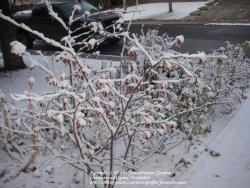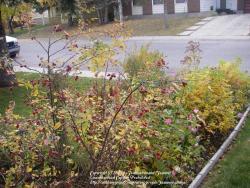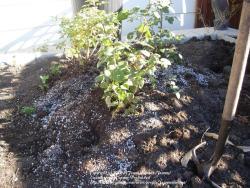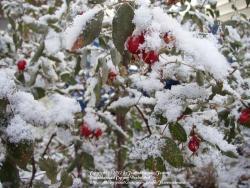Roses are tougher than you may think. I have had great success with over-wintering many roses that are rated Zone 4, 5 or 6 in my Zone 3A garden. In addition to being Zone 3A, it basically means that the temperatures will commonly dip to – 40ºC or F. Of course there are other factors that determine the zone, which may include altitude (1084m or 3556 ft for Calgary) and typical weather systems. Calgary is located in the Chinook belt; therefore during the winter the huge temperature swings are very hard on the plant material.
Key Points:
• All (hardy and not-so-hardy) plants need to be watered in the fall. This is the most important do or die task.
• No rose will make it through the winter (Zone 3A) in a pot. They have to be planted into the ground. I transplant all my container roses into the veggie garden for the winter. Typically the ground does not freeze here until mid November, so about a month before ground freeze is a good guideline for transplanting roses.
• Once there have been several frosts and most of the foliage has dropped, it is time to mulch. If the night temperature becomes consistently colder than -8ºC, it is the time to add protection.
• I have tried different mulch and find peat moss to be the best. It seems more insulating than straw or leaves. It also forms a hard crust, so it doesn’t disappear over the winter and you don’t need to use the rose huts. Peat moss is also dual purpose because in the spring I spread out the peat moss in the flowerbeds and work it in. With straw and leaves it can be quite a job for spring cleanup.
• Once the roses are ready for mulch, the peat moss is applied. I try to bury the minis completely and mound about a foot high on all the other not-so-hardy to the area roses. The canes can be cut down to about 2 feet so they do not whip in the wind and break.
• The hardy roses do not get any special treatment other than a good fall watering.
• All canes below the peat moss level will remain green throughout the winter.
• Snow is the best insulator. Shovel it onto the roses every snowfall.
• Spring uncovering is one of the most important steps of successfully over-wintering the roses that are pushing the zone. Once the night low temperatures start to consistently become warmer than -10ºC or 14ºF, it’s time to start removing the peat moss. Do this a little at a time, so it will be 3 to 4 weeks before the mulch is removed. Peat moss heats up a lot with the daytime heating and you don’t want the rose to start to bud out too much, too soon. By removing the mulch in stages, it will send out new shoots that are able to withstand those spring frosts in May.
This is what I do, hope it helps.







| Thread Title | Last Reply | Replies |
|---|---|---|
| Winterizing roses by valleylynn | Dec 26, 2015 4:47 PM | 7 |
| wintering roses by jmc | Nov 28, 2015 11:48 AM | 0 |
| Winterising roses. by KAMasud | Nov 9, 2013 7:40 PM | 3 |